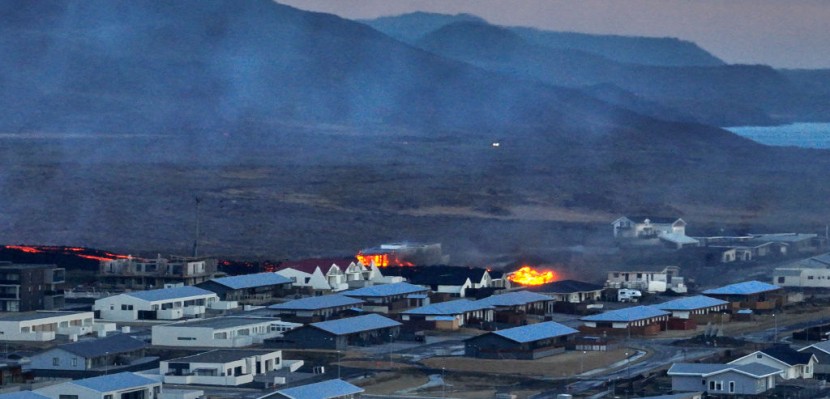Iceland's president, Gudni Th. Johannesson, announced late Sunday evening, January 14, that his country is battling "tremendous forces of nature" after the volcano near the southwestern town of Grindavik resumed its activity.
Molten lava coming from the volcano slowly entered the town's vicinity and consumed several houses in its wake.

In a televised address, Johannesson said that a "daunting period of upheaval" began with the reawakening of the long-dormant Svartsengi volcanic system situated in the area.
"We don't yet know how this eruption will unfold, but we must still take those actions that are within our power," he said.
Hours before re-erupting, authorities ordered Grindavik's residents to leave the town once more after a series of volcanic earthquakes were detected.
Local geophysicist Magnus Tumi Gudmundsson was quoted by the Associated Press when he said that the eruption "decreased considerably" overnight, but a conclusion was impossible to project.
Redirecting the Lava
Grindavik's 3,800 residents were first evacuated in November after earthquakes and thermal fissures were detected.
On December 18, the volcano erupted after almost 800 years, sending lava flowing away from the town, which allowed residents to briefly return to their homes by December 22 after volcanic activity weakened for a few weeks.
Since then, emergency service crews have been working hard to build defensive walls to redirect much of the lava flow from the new eruption nearer to the town.
While no one has been killed in the eruptions, a workman was reported to be missing after falling into a crack opened by the volcano.
Nevertheless, Johannesson urged Icelanders to "continue to hope for as good an outcome as possible" despite the volcano's activity.
"We will carry on with our responsibilities and we will continue to stand together," he added.
Iceland sits above a tectonic and volcanic hot spot in the North Atlantic. The last time a major volcanic eruption happened in the country was in 2010 when Eyjafjallajokull spewed massive clouds of ash into the atmosphere, which disrupted trans-Atlantic air travel for months.
© 2025 HNGN, All rights reserved. Do not reproduce without permission.








